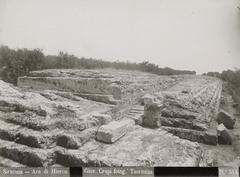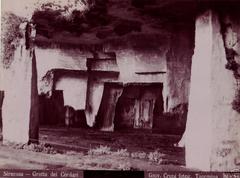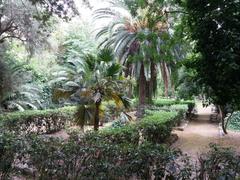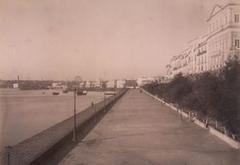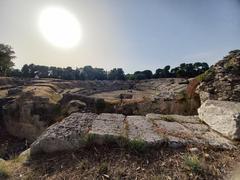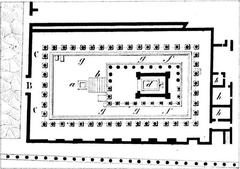
Captivating Guide to Exploring Syracuse, Italy
Publication Date: 14/08/2024
Welcome to Syracuse: A Journey Begins
Welcome to Syracuse, Italy, a city where ancient legends come alive amidst stunning Baroque architecture and sun-drenched Mediterranean shores. Founded by Greek colonists from Corinth in 734 BC, Syracuse quickly rose to prominence as one of the most powerful city-states in the Mediterranean. Its strategic location on the southeastern coast of Sicily allowed it to control maritime trade routes and exert influence over the region. Picture the grandeur of the Greek Theatre, one of the largest and best-preserved ancient theaters in the world, echoing with the voices of ancient actors (History Hit).
But Syracuse isn’t just about ancient ruins. Fast forward to the Roman era, and you’ll find remnants of their architectural prowess. The city fell to Roman forces in 212 BC after a three-year siege, marking the end of its independence. Roman builders constructed the Roman Amphitheater and the Altar of Hieron II, monuments that still influence Syracuse’s layout today (Italy This Way).
The city’s rich tapestry doesn’t end there. Picture Syracuse as a Byzantine stronghold in the 5th century AD, its fortifications towering high. In the 9th century, Arab forces brought new agricultural techniques, architectural styles, and cultural practices, adding another layer to this historical mosaic (Great Sicily).
By the 11th century, the Normans had their turn, bringing stability and prosperity. The majestic Maniace Castle, a Norman masterpiece, still stands as a testament to their architectural genius. Fast forward to the Spanish period in the 16th and 17th centuries, and you’ll see Syracuse morph into a fortress city, its skyline adorned with new defensive walls and bastions. The catastrophic earthquake of 1693 led to a Baroque transformation, giving us the Cathedral of Syracuse and the Church of Santa Lucia alla Badia, which houses Caravaggio’s masterpiece “The Burial of Saint Lucy” (Italy Magazine).
In the modern era, Syracuse played a strategic role in World War II, serving as a base for Allied forces during the invasion of Sicily. The armistice between Italy and the Allies was signed in Santa Teresa Longarini in 1943. In 2005, the city, along with the nearby Necropolis of Pantalica, was designated a UNESCO World Heritage Site, underscoring its exceptional cultural and historical significance (Ermak Vagus).
Ready to uncover Syracuse’s secrets? Download Audiala, your ultimate audio guide to the city’s hidden gems and legendary tales. Adventure awaits!
Your Adventure Map
- Imagine Walking Through History: The Timeless Charm of Syracuse, Italy
- Ancient Greek Origins
- Roman Conquest and Influence
- Byzantine and Arab Periods
- Norman and Hohenstaufen Rule
- Spanish and Baroque Transformation
- Modern Era and UNESCO Recognition
- Key Historical Sites
- Archaeological Park of Neapolis
- Island of Ortigia
- Temple of Apollo
- Paolo Orsi Regional Archaeological Museum
- Major Attractions in Syracuse, Free Municipal Consortium of Syracuse, Italy
- Ortigia Island
- Greek Theatre of Syracuse
- Temple of Apollo
- Cathedral of Syracuse
- Fonte Aretusa
- Castello Maniace
- Archaeological Park of Neapolis
- Roman Amphitheatre
- Ear of Dionysius
- Museo Archeologico Regionale Paolo Orsi
- Palazzo Bellomo
- Piazza Archimede
- Teatro dei Pupi
- Traditional Market
- Cala Rossa Beach
- Saint Lucy’s Day
- Visitor Tips
- Visitor Tips for Syracuse, Free Municipal Consortium of Syracuse, Italy
- Introduction
- Best Time to Visit
- Getting There
- Getting Around
- Accommodation
- Dining and Food
- Safety and Health
- Cultural Etiquette
- Day Trips
- Special Events
- Practical Tips
- Local Secrets, Sensory Descriptions, and Hidden Gems
- Interactive Elements
- Pop Culture References
- Itineraries
- Local Lingo Lessons
- Seasonal Highlights
- Myth Busting and Surprises
- Storytelling Elements
- FAQ
- Call to Action
Imagine Walking Through History: The Timeless Charm of Syracuse, Italy
Ancient Greek Origins
Syracuse, known as Siracusa in Italian, isn’t just a city; it’s a living museum where Greek gods might just pop out for a coffee! Founded by Greek colonists from Corinth in 734 BC, it quickly rose to prominence as one of the most powerful city-states in the Mediterranean. The city’s strategic location on the southeastern coast of Sicily allowed it to control maritime trade routes and exert influence over the region. Picture the grandeur of the Greek Theatre, one of the largest and best-preserved ancient theaters in the world, echoing with the voices of ancient actors (History Hit).
Roman Conquest and Influence
Fast forward to the 3rd century BC, and the Romans are knocking on Syracuse’s door. After a three-year siege, the city fell to Roman forces in 212 BC, marking the end of its independence. As you stroll through the city, you can almost hear the clamor of Roman builders constructing the Roman Amphitheater and the Altar of Hieron II. The Roman architecture and urban planning still influence Syracuse’s layout today (Italy This Way).
Byzantine and Arab Periods
Imagine Syracuse as a Byzantine stronghold in the 5th century AD, its fortifications towering high. It transformed into a major administrative and military center. Close your eyes and feel the serenity inside the Church of San Giovanni. In the 9th century, Arab forces brought new agricultural techniques, architectural styles, and cultural practices. The aromas of exotic spices in the local cuisine are a testament to this rich heritage (Great Sicily).
Norman and Hohenstaufen Rule
By the 11th century, the Normans had their turn, bringing stability and prosperity. The majestic Maniace Castle, a Norman masterpiece, still stands as a testament to their architectural genius. Frederick II of the Hohenstaufen Dynasty, in the 13th century, expanded trade and introduced new reforms. Imagine the bustling markets filled with traders from across the Mediterranean (History Hit).
Spanish and Baroque Transformation
The Spanish period in the 16th and 17th centuries saw Syracuse morph into a fortress city. Picture the city’s skyline with new defensive walls and bastions. The catastrophic earthquake of 1693 led to a Baroque transformation. The Cathedral of Syracuse, built on the remains of a Greek temple, and the Church of Santa Lucia alla Badia house Caravaggio’s masterpiece “The Burial of Saint Lucy” (Italy Magazine).
Modern Era and UNESCO Recognition
In the 19th and 20th centuries, Syracuse played a strategic role in World War II, serving as a base for Allied forces during the invasion of Sicily. The armistice between Italy and the Allies was signed in Santa Teresa Longarini in 1943. In 2005, the city, along with the nearby Necropolis of Pantalica, was designated a UNESCO World Heritage Site, underscoring its exceptional cultural and historical significance (Ermak Vagus).
Key Historical Sites
Archaeological Park of Neapolis
Step into the Archaeological Park of Neapolis, where the Greek Theatre, Roman Amphitheater, and the Ear of Dionysius await. These monuments provide a glimpse into Syracuse’s ancient past and its role as a cultural and political hub in the Mediterranean (Great Sicily).
Island of Ortigia
Ortigia, the heart of Syracuse, is a treasure trove of historical and architectural landmarks. Explore the Cathedral of Syracuse, the Fountain of Arethusa, and the Maniace Castle. The island’s narrow streets and Baroque buildings create a picturesque setting that reflects the city’s rich history (Italia Like a Local).
Temple of Apollo
The Temple of Apollo, located on the Island of Ortigia, is one of the oldest Greek temples in Sicily. Although only fragments remain, its historical significance offers valuable insights into the early Greek presence in Syracuse (Great Sicily).
Paolo Orsi Regional Archaeological Museum
The Paolo Orsi Regional Archaeological Museum houses an extensive collection of artifacts from various historical periods. Highlights include the Venus of Morgantina and numerous ancient sculptures, pottery, and coins (Great Sicily).
Cultural Legacy
Syracuse’s cultural legacy includes being the birthplace of Archimedes, the legendary mathematician and inventor. The Archimedes’ Park Museum offers a peek into his brilliant mind. The city’s vibrant festivals, like the Feast of Santa Lucia, and its unique cuisine reflect its diverse history (Italy Magazine).
Insider Tips and Hidden Gems
- Plan Ahead: Many sites have specific hours and fees. Check their websites for up-to-date info.
- Guided Tours: Join a guided tour for deeper insights and lively stories.
- Comfortable Footwear: Wear comfy shoes for walking on uneven terrain.
- Stay Hydrated: Carry water, especially in summer.
- Respect the Sites: Follow guidelines to preserve these treasures.
Interactive Quest
- Challenge: Find the hidden inscription at the Greek Theatre.
- Taste Test: Try a local dish and guess its historical roots.
Local Lingo Lessons
- Ciao bella!: Hello beautiful! (Pronunciation: chow beh-lah)
- Grazie mille: Thank you very much! (Pronunciation: grah-tsye mee-leh)
Seasonal Highlights
- Feast of Santa Lucia: December celebrates the city’s patron saint.
- Summer Vibes: Enjoy the beaches and outdoor festivals.
Myth Busting
- Did you know?: Syracuse was once more powerful than Athens!
Storytelling Elements
- Archimedes’ Eureka: Legend has it that Archimedes ran naked through the streets shouting “Eureka!” after discovering the principle of buoyancy.
FAQ
- Best time to visit?: Spring and fall for pleasant weather and fewer crowds.
- How to get to Ortigia?: A short walk or bus ride from the mainland.
Call to Action
Unlock Syracuse’s secrets with Audiala. Download now and let the adventure begin!
Major Attractions in Syracuse, Free Municipal Consortium of Syracuse, Italy
Ortigia Island
Ortigia Island, the historical heart of Syracuse, is a compact gem that encapsulates 2,500 years of architectural marvels. Stroll through Greek and Roman ruins, medieval Norman buildings, and elegant Baroque facades. The island is home to the stunning Piazza Duomo, where the Cathedral of Syracuse stands tall. This cathedral is built upon ancient Doric columns from the Temple of Athena, showcasing history layered upon history (World History Encyclopedia).
Greek Theatre of Syracuse
Explore the Greek Theatre of Syracuse, one of the largest theaters in the ancient Greek world. Built in the 5th century BCE, it could accommodate up to 15,000 spectators. The theater is still used today for classical performances, making it a living testament to the city’s rich cultural heritage (Planetware).
Temple of Apollo
Near the edge of Ortigia lies the Temple of Apollo, one of Sicily’s oldest Doric temples, dating back to the 6th century BCE. While you can’t enter the temple, its grandeur can be admired from the outside, and informational placards around its perimeter offer a glimpse into its storied past (Rachel IRL).
Cathedral of Syracuse
The Cathedral of Syracuse, also known as the Duomo, is a UNESCO-protected marvel blending Baroque and Rococo architecture, with origins in the worship of Minerva. Constructed in 1753, it’s best admired from one of the cafes in the piazza (Culture Trip).
Fonte Aretusa
Discover Fonte Aretusa, a freshwater spring on Ortigia Island. According to Greek mythology, the nymph Arethusa was transformed into this spring by Artemis. The site is surrounded by lush vegetation and various wildlife, making it a serene spot to relax and enjoy the natural beauty (Planetware).
Castello Maniace
At the tip of Ortigia Island stands Castello Maniace, a 13th-century castle built by Emperor Frederick II. With stunning views of the sea and city, it’s an excellent example of medieval military architecture, open for public tours (Culture Trip).
Archaeological Park of Neapolis
The Archaeological Park of Neapolis is a vast area housing several significant ancient sites, including the Roman Amphitheatre, the Altar of Hieron, and the Ear of Dionysius. The park offers a comprehensive look at the city’s ancient history (Traveling Italian).
Roman Amphitheatre
Experience the Roman Amphitheatre, one of Italy’s largest and best-preserved Roman amphitheatres. Built in the 3rd century AD, it could hold up to 20,000 spectators and was used for gladiatorial contests, offering a glimpse into the entertainment culture of ancient Rome (Planetware).
Ear of Dionysius
The Ear of Dionysius is a limestone cave located in the Archaeological Park of Neapolis. Known for its unique shape resembling a human ear and exceptional acoustics, legend has it that tyrant Dionysius used it as a prison to hear his captives’ whispers (Traveling Italian).
Museo Archeologico Regionale Paolo Orsi
The Museo Archeologico Regionale Paolo Orsi is one of Italy’s most important archaeological museums. It features an extensive collection of artifacts from Syracuse and the surrounding region, including Greek and Roman sculptures, pottery, and coins (Planetware).
Palazzo Bellomo
Palazzo Bellomo, a 13th-century palace now serving as an art gallery, features a collection of medieval and Renaissance art, including works by Antonello da Messina and Caravaggio. The palace itself is an architectural marvel with Gothic and Baroque elements (Britannica).
Piazza Archimede
Piazza Archimede is a bustling square in Ortigia, named after the famous mathematician and engineer Archimedes. The square hosts the Fountain of Diana, a beautiful Baroque fountain depicting the goddess Diana surrounded by nymphs and other mythological figures (World History Encyclopedia).
Teatro dei Pupi
Teatro dei Pupi is a traditional Sicilian puppet theater in Ortigia. Offering performances of classic Sicilian puppet shows, recognized by UNESCO as intangible cultural heritage, it’s a unique way to experience local culture suitable for all ages (Cityplanet).
Traditional Market
Near Ortigia Island, the traditional market is a lively bazaar offering a wide range of local produce, including seafood, bread, wine, citrus fruits, vegetables, and dairy products. It’s an immersive cultural experience that lets visitors feel the pulse of Syracuse (Cityplanet).
Cala Rossa Beach
Located at the point of Ortigia, Cala Rossa Beach is a pebbly beach offering a refreshing escape from the city’s historical sites. Visitors can swim in the clear waters and enjoy the scenic coastline views. For sandy beaches, head south of the town (Traveling Italian).
Saint Lucy’s Day
Celebrated on December 13th, Saint Lucy’s Day is an important event in Syracuse. Saint Lucy is the patron saint of the city, and her feast day features religious processions, fireworks, and various cultural activities, providing unique insights into local traditions and religious practices (Wikipedia).
Visitor Tips
- Best Time to Visit: Syracuse has a Mediterranean climate with warm, dry summers and mild, wet winters. The best time to visit is during the spring and fall when the weather is pleasant, and the tourist crowds are smaller (Traveling Italian).
- Language: Italian is the official language, but English is widely spoken in tourist areas. Learning a few basic Italian phrases can enhance your experience ([Traveling Italian](https://www














